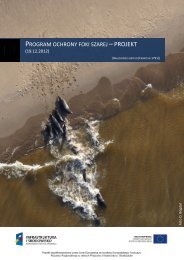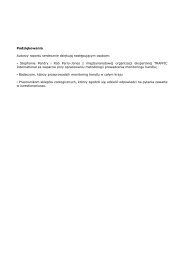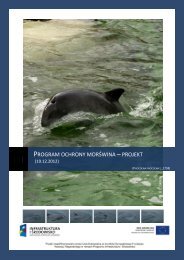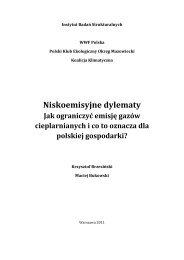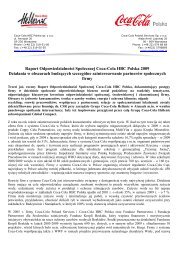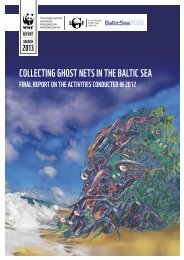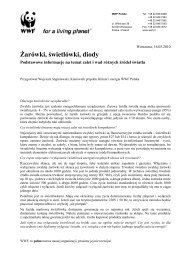Biodiversity, biocapacity and better choices
Biodiversity, biocapacity and better choices
Biodiversity, biocapacity and better choices
Create successful ePaper yourself
Turn your PDF publications into a flip-book with our unique Google optimized e-Paper software.
Does the Ecological Footprint take into accountother species?The Ecological Footprint compares human dem<strong>and</strong> on biodiversitywith the natural world’s capacity to meet this dem<strong>and</strong>. It thus servesas an indicator of human pressure on local <strong>and</strong> global ecosystems.In 2008, humanity’s dem<strong>and</strong> exceeded the biosphere’s regenerationrate by more than 50 per cent. This overshoot may result indepletion of ecosystems <strong>and</strong> fill-up of waste sinks. This ecosystemstress may negatively impact biodiversity. However, the Footprintdoes not measure this latter impact directly, nor does it specifyhow much overshoot must be reduced if negative impacts are tobe avoided.For additional information about current Ecological Footprintmethodology, data sources, assumptions <strong>and</strong> results, please visit:www.footprintnetwork.org/atlasFor more information on the Ecological Footprint at a globallevel, please see: (Butchart et al., 2010; Global Footprint Network,2010; GTZ, 2010; Kitzes et al., 2009; Kitzes et al., 2008) at aregional <strong>and</strong> national level, please see (Ewing et al., 2009; GlobalFootprint Network, 2008; WWF, 2007; 2008a) <strong>and</strong> for furtherinformation on the methodology used to calculate the EcologicalFootprint, please see (Ewing B. et al., 2009; Galli et al., 2007).Does the Ecological Footprint say what is a “fair” or“equitable” use of resources?The Footprint documents what has happened in the past. Itcan quantitatively describe the ecological resources used by anindividual or a population, but it does not prescribe what theyshould be using. Resource allocation is a policy issue, based onsocietal beliefs about what is or is not equitable. While Footprintaccounting can determine the average <strong>biocapacity</strong> that is availableper person, it does not stipulate how this <strong>biocapacity</strong> should beallocated among individuals or countries. However, it does providea context for such discussions.How relevant is the Ecological Footprint if thesupply of renewable resources can be increased <strong>and</strong>advances in technology can slow the depletion ofnon-renewable resources?The Ecological Footprint measures the current state of resourceuse <strong>and</strong> waste generation. It asks: In a given year, did hum<strong>and</strong>em<strong>and</strong>s on ecosystems exceed the ability of ecosystems to meetthese dem<strong>and</strong>s? Footprint analysis reflects both increases in theproductivity of renewable resources <strong>and</strong> technological innovation(for example, if the paper industry doubles the overall efficiencyof paper production, the footprint per tonne of paper will halve).Ecological Footprint Accounts capture these changes once theyoccur <strong>and</strong> can determine the extent to which these innovationshave succeeded in bringing human dem<strong>and</strong> within the capacity ofthe planet’s ecosystems. If there is a sufficient increase in ecologicalsupply <strong>and</strong> a reduction in human dem<strong>and</strong> due to technologicaladvances or other factors, Footprint Accounts will show this asthe elimination of global overshoot.WWF Living Planet Report 2012 page 138 Annex: Technical notes <strong>and</strong> data tables page 139



